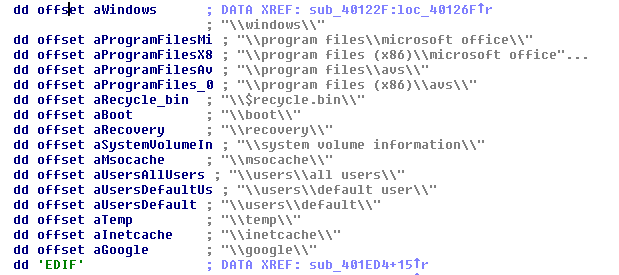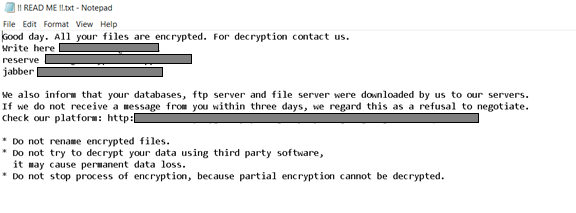- “여러 AI 모델을 로컬에서 테스트 가능”···구글, 오픈소스 앱 ‘AI 엣지 갤러리’ 공개
- Why I recommend this OnePlus phone over the S25 Ultra - especially at this new low price
- I replaced my laptop with Microsoft's 12-inch Surface Pro for weeks - here's my buying advice now
- This palm recognition smart lock doubles as a video doorbell (and has no monthly fees)
- Samsung is giving these Galaxy phones a big One UI upgrade - here's which models qualify
Cuba Ransomware Group’s New Variant Found Using Optimized Infection Techniques
Trend Micro Research observed the resurgence of the Cuba ransomware group that launched a new malware variant using different infection techniques compared to past iterations. We discuss our initial findings in this report.
June 08, 2022
Read time: ( words)
Cuba ransomware is a malware family that has been seasonally detected since it was first observed in February 2020. It resurfaced in November 2021 based on the FBI’s official notice, and has reportedly attacked 49 organizations in five critical infrastructure sectors, amassing at least US$ 43.9 million in ransom payments.
We observed Cuba ransomware’s resurgence in March and April this year. Our monitoring showed that the malware authors seem to be pushing some updates to the current binary of a new variant. The samples we examined in March and April used BUGHATCH, a custom downloader that the malicious actor did not employ in previous variants specifically for the staging phase of the infection routine.
In late April we also noticed another variant of the ransomware, this time targeting two organizations based in Asia. This blog entry focuses on our analysis of the latest samples uncovered from this period.
While the updates to Cuba ransomware did not change much in terms of overall functionality, we have reason to believe that the updates aim to optimize its execution, minimize unintended system behavior, and provide technical support to the ransomware victims if they choose to negotiate.
Our analysis of the new variant revealed that the malicious actor added some processes and services to terminate the following:
- MySQL
- MySQL80
- SQLSERVERAGENT
- MSSQLSERVER
- SQLWriter
- SQLTELEMETRY
- MSDTC
- SQLBrowser
- sqlagent.exe
- sqlservr.exe
- sqlwriter.exe
- sqlceip.exe
- msdtc.exe
- sqlbrowser.exe
- vmcompute
- vmms
- vmwp.exe
- vmsp.exe
- outlook.exe
- MSExchangeUMCR
- MSExchangeUM
- MSExchangeTransportLogSearch
- MSExchangeTransport
- MSExchangeThrottling
- MSExchangeSubmission
- MSExchangeServiceHost
- MSExchangeRPC
- MSExchangeRepl
- MSExchangePOP3BE
- MSExchangePop3
- MSExchangeNotificationsBroker
- MSExchangeMailboxReplication
- MSExchangeMailboxAssistants
- MSExchangeIS
- MSExchangeIMAP4BE
- MSExchangeImap4
- MSExchangeHMRecovery
- MSExchangeHM
- MSExchangeFrontEndTransport
- MSExchangeFastSearch
- MSExchangeEdgeSync
- MSExchangeDiagnostics
- MSExchangeDelivery
- MSExchangeDagMgmt
- MSExchangeCompliance
- MSExchangeAntispamUpdate
- Microsoft.Exchange.Store.Worker.exe
Another apparent change is the expansion of the safelisted directories and file extensions that it will avoid encrypting:
Directory Safelist:
- windows
- program filesmicrosoft office
- program files (x86)microsoft office
- program filesavs
- program files (x86)avs
- $recycle.bin
- boot
- recovery
- system volume information
- msocache
- usersall users
- usersdefault user
- usersdefault
- temp
- inetcache
Extension Safelist:
- .exe
- .dll
- .sys
- .ini
- .lnk
- .vbm
- .cuba

We compared the new variant used in late April 2022 to the previous ones and found that the former did not have all the commands or functions that came with the latter. The malicious actors only retained two commands in the new one that are directory- or location-related phrases. These are as follows:
Notably, the wording of the ransom note used in the latest variant (see Figure 4) is different from the previous one that the malicious actors used in the samples we analyzed in March this year, but the onion site indicated in both ransom notes is the same. The ransom note used in late April 2022 explicitly states that they will publish exfiltrated data on their Tor site if the victims refuse to negotiate after three days, an apparent use of the double extortion technique. The ransomware gang did not clearly state the threat of publication of stolen data in the ransom note dropped in March 2022 (see Figure 3).

Another new feature of the latest ransom note is the addition of quTox, a means for technical support to the ransomware victims to facilitate ransom payment negotiation.

We are still investigating the latest set of samples and have yet to establish the entire infection chain for the new Cuba ransomware variant. As mentioned, the indicators that were commonly seen in most of the recent infections were not present in the latest samples we saw. Moreover, our detections of new samples in May suggest that Cuba ransomware’s attacks will persist in the coming months, possibly with more updates to the malware that are par for the course.
Recommendations
As new malware variants emerge, a proactive cybersecurity stance is important to ensure that organizations are protected against modern ransomware threats. To defend systems against similar attacks, organizations can establish security frameworks that systematically allocate resources based on an enterprise’s needs.
Consider following the security frameworks established by the Center of Internet Security and the National Institute of Standards and Technology when developing your own cybersecurity strategies. The frameworks they created help security teams to mitigate risks and minimize exposure to threats. Implementing the best practices discussed in their respective frameworks can save organizations the time and effort when they customize their own. Their frameworks guide organizations through the whole process of planning while providing suggestions on measures that need to be established first.
Indicators of Compromise (IOCs)
| SHA256 | Trend Micro Detection |
| 89288de628b402621007c7ebb289233e7568307fb12a33aac7e834504c17b4af | Ransom.Win32.BACUCRYPT.YPCD2T |
Tags
sXpIBdPeKzI9PC2p0SWMpUSM2NSxWzPyXTMLlbXmYa0R20xk

